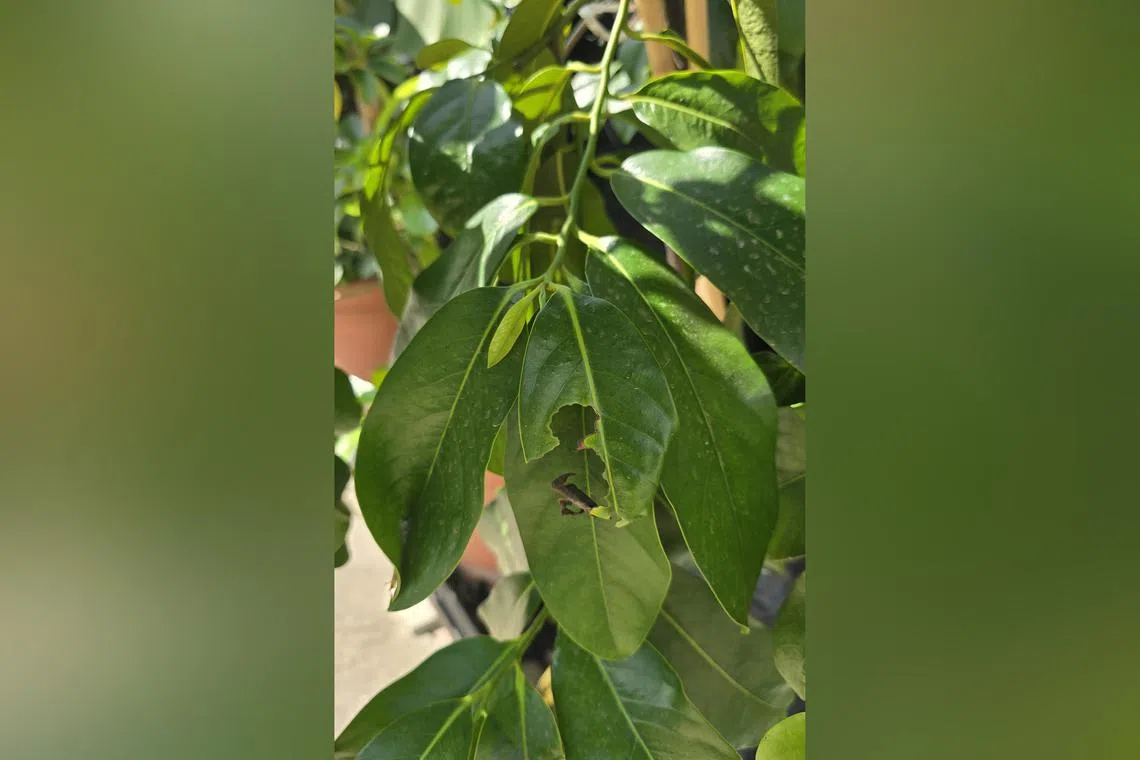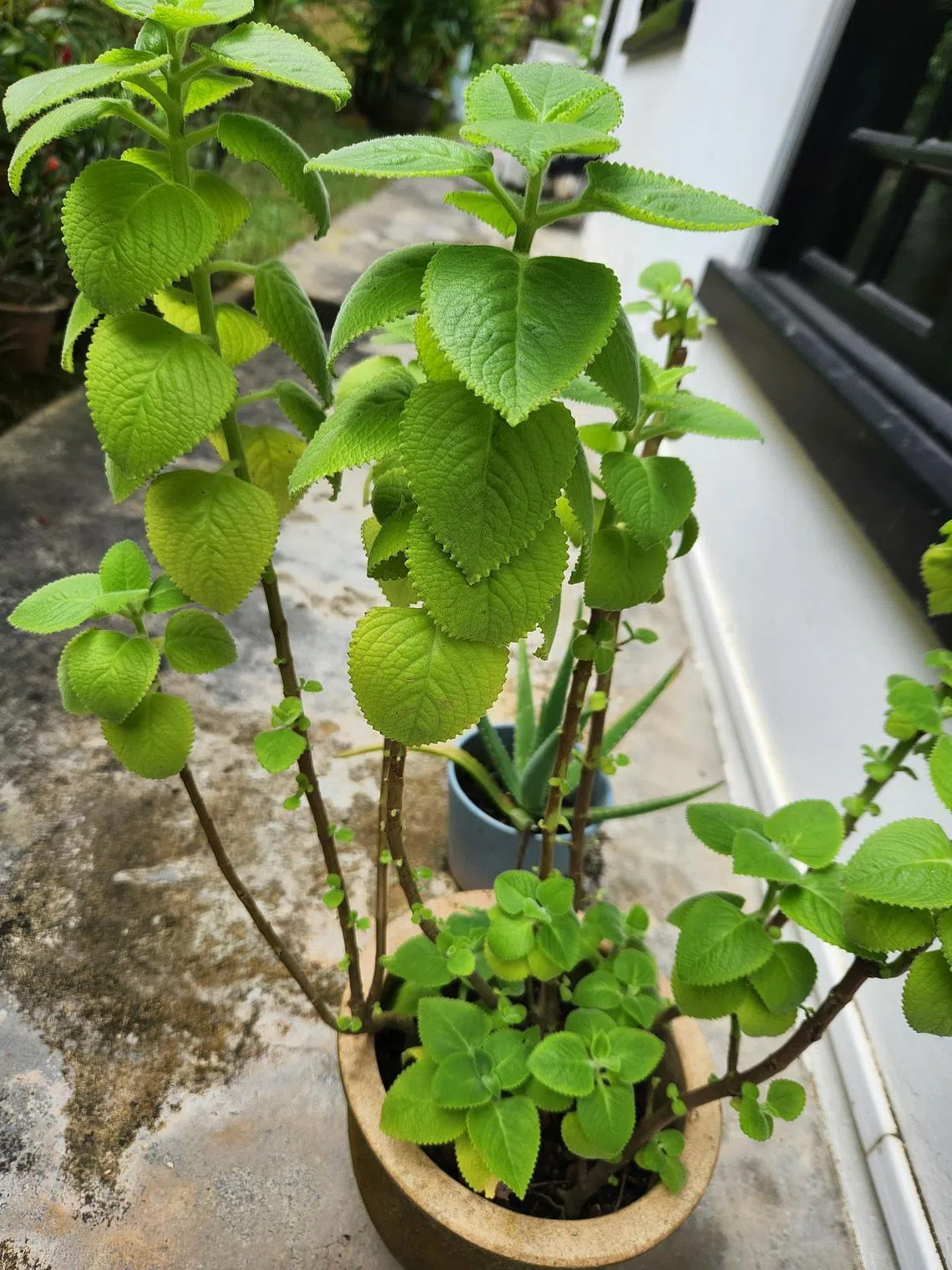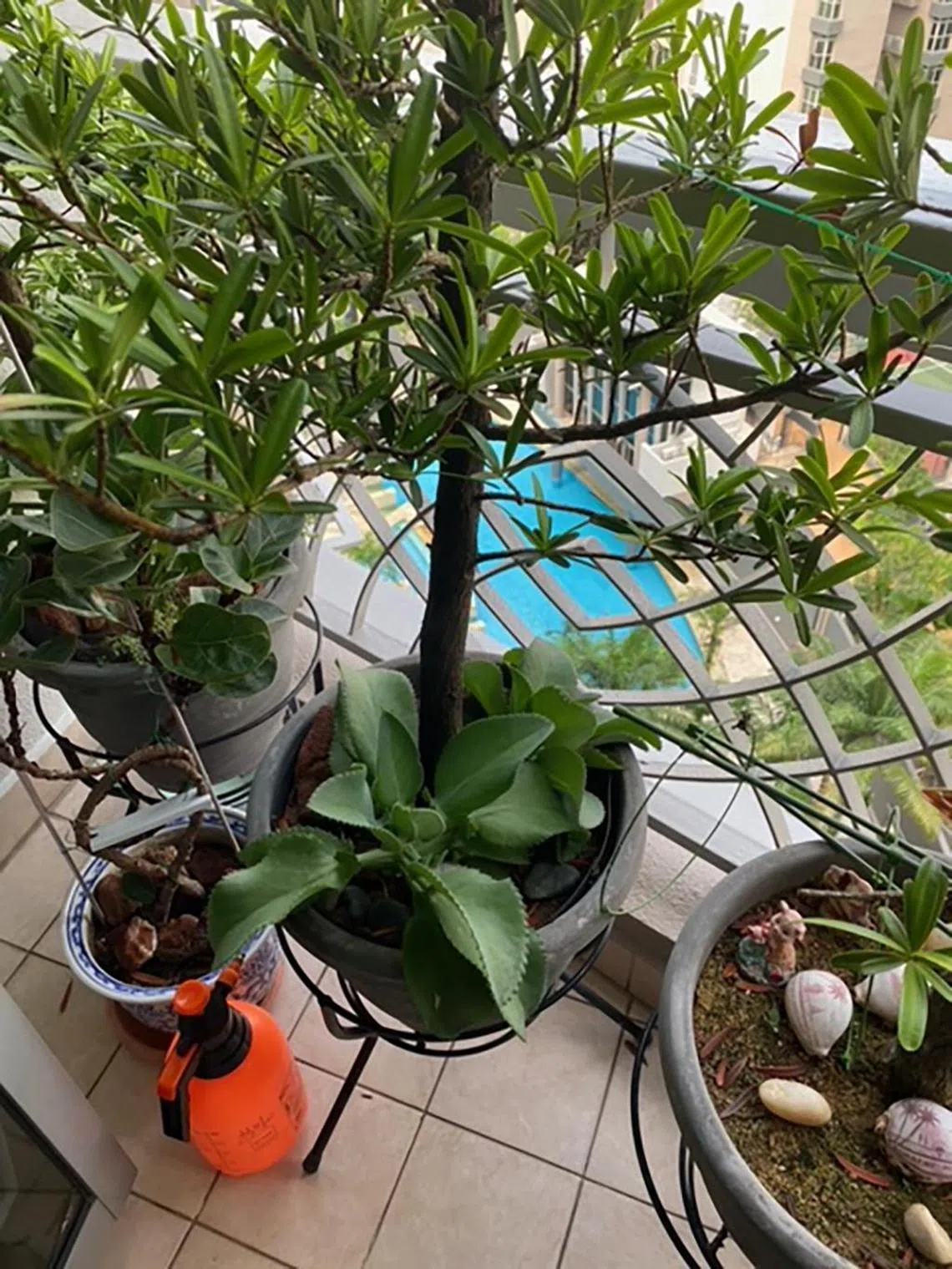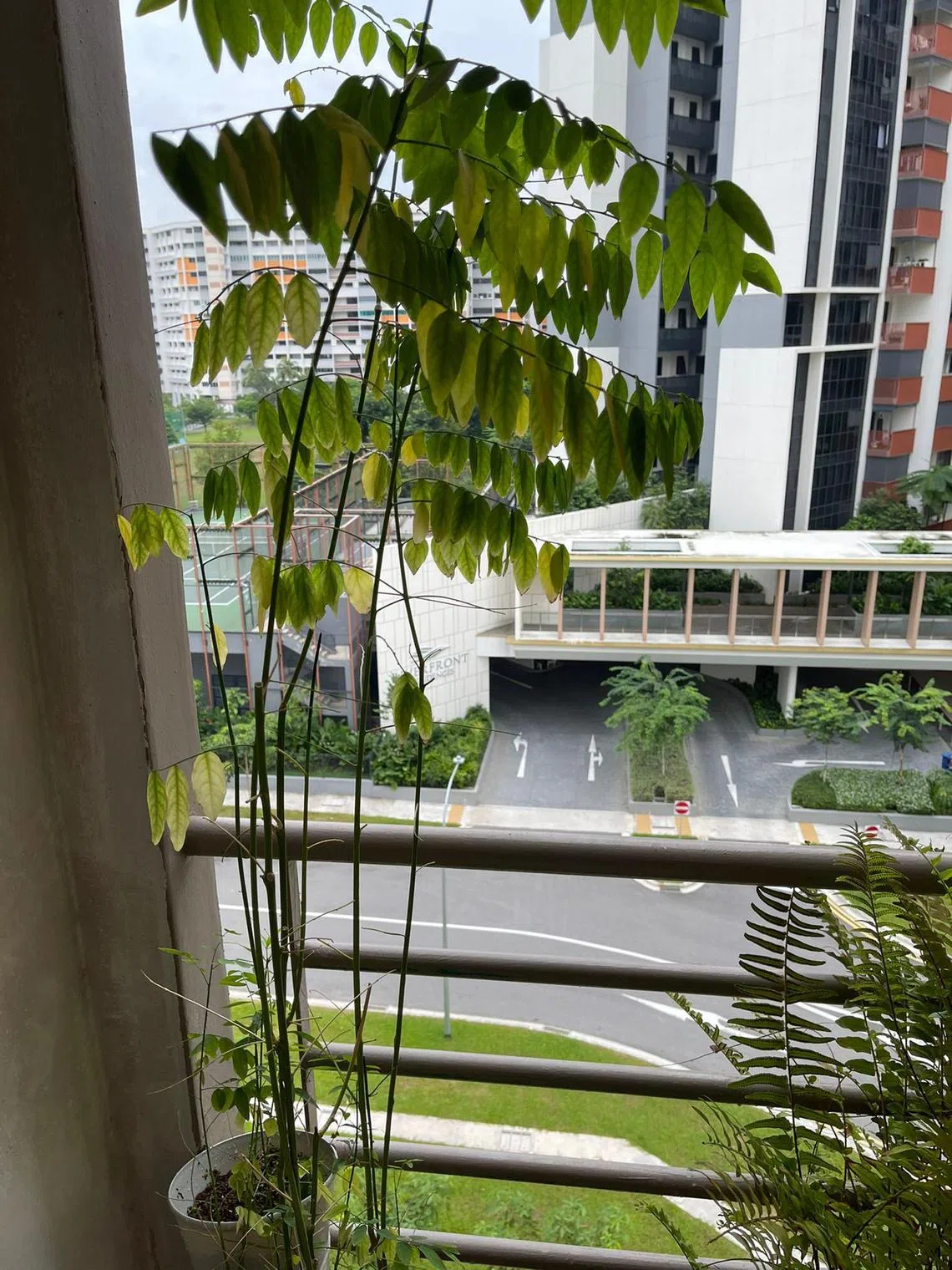Root Awakening: Avoiding use of pesticides is better for the environment
Sign up now: Get ST's newsletters delivered to your inbox

Check the Black Sapote frequently and remove caterpillars by hand promptly.
PHOTO: ADRIAN LING
Wilson Wong
Follow topic:
Removal of caterpillars is recommended for small infestations
My Black Sapote has been visited by caterpillars, which are laying eggs. What is a good treatment option? I am spraying the plant with soap at the moment. Also, how can I encourage fruiting? Is the fruit and its skin edible?
Adrian Ling
If the infestation is small, try and remove the caterpillars manually instead of spraying pesticides. Do frequent visual checks and take action promptly.
The damage on your plant appears to be minimal, and affects only how the plant looks.
Preventive spraying of pesticides, such as one specific to caterpillars – Bacillus thuringiensis subsp. kurstaki (Btk) – requires regular applications. Soap does not really work on caterpillar infestations.
Is your Black Sapote grown from a seed or a grafted specimen? If the plant is grown from a seed, it will need at least five years to attain maturity to flower and fruit. Grafted specimens should fruit when the plant is smaller, requiring less waiting time. Only the dark pulp of the ripe fruit is edible.
Indian borage appears to be pot-bound

Consider moving the Indian borage to a larger container to help it grow better.
PHOTO: YIH MIN TAN
The leaves of my Indian borage have been turning yellow despite the plant having sufficient sun and water. When there is excessive rain, I take it into shelter. I have also tried cutting the taller plants and replanting them closer to the soil (the shorter plants at the bottom), but they continue to turn yellow. What is the cause of the yellowing leaves? Is it overcrowding or a lack of nutrients?
Yih Min Tan
It appears that the Indian borage plant is pot-bound, where the plant roots have filled the container. This will cause the plant’s root zone to dry out faster and nutrients may have been exhausted.
In response to the lack of nutrients, the plant will tend to develop older, yellow leaves. Older leaves may also drop whenever the plant lacks water.
The plant can be moved to a larger pot and you can prune the leggy growth. This will also encourage the plant to produce side shoots, leading to a fuller-looking plant. Use the pruned stems and propagate new plants via the stem-cutting approach. New plants will tend to be more vigorous too.
Move Podocarpus into a larger pot while Kalanchoe can be potted separately

The smaller plant sharing the pot is the Mother of Thousands (Kalanchoe × laetivirens).
PHOTO: GARY CHAN
I noticed that this plant has grown quite large in my pot with Podocarpus macrophyllus. Does this affect the health of the Podocarpus macrophyllus?
Gary Chan
The plant growing at the base of your Buddhist Pine (Podocarpus macrophyllus) is the Mother of Thousands (Kalanchoe × laetivirens).
It has a rather shallow root system and is not likely to compete with the Buddhist Pine.
However, if you would like to keep the plant, you can move it into a separate pot. Do note that it can produce numerous baby plants on the edge of its leaves.
To allow your Buddhist Pine to grow larger and healthier, it is recommended that you carefully move the plant into a larger pot.
Take the entire root ball as it is and do not allow it to break apart as it will damage the delicate root system of this plant. A larger pot will have a larger soil volume for the roots to grow. It will hold sufficient moisture for the plant too.
Bear in mind that the Buddhist Pine does not tolerate drying out as it can cause the plant to die.
Sayur manis plant may be lacking water, light and space to grow

The yellowing leaves could be caused by a lack of light and/or water.
PHOTO: CAROL TEO
The leaves of my sayur manis plant are turning yellow and the plant does not seem to be growing new branches and leaves.
Carol Teo
From the picture and description, the leaves on the lower part of your sayur manis (Breynia androgyna) appears to be caused by the lack of water and/or light. Note that this plant thrives in a sunny spot with at least six hours of direct sunlight daily. The lack of light can cause plant leaves to yellow and fall, and lead to sluggish growth.
Check if the pot that you used is too small for it. Plants that are pot-bound will lack water easily due to the limited soil volume, even if water is given on a daily basis. Plants will easily become thirsty if the weather is hot and windy.
Answers by Dr Wilson Wong, an NParks-certified practising horticulturist and parks manager. He is the founder of Green Culture Singapore and an adjunct assistant professor (Food Science & Technology) at the National University of Singapore.
Have a gardening query? E-mail it with clear, high-resolution pictures of at least 1MB, if any, and your full name to . We reserve the right to edit and reject questions.

